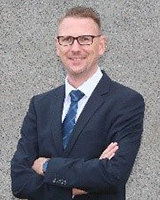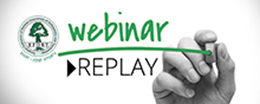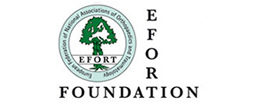
Prof. Dr. Christian Simanski
EFORT conducted the following interview with Prof. Dr. Christian Simanski, chief of the department of orthopaedic trauma, hand and foot surgery at St. Martinus Hospital in Langenfeld, Germany. Prior to his role at St. Martinus, Simanski was the senior registrar for orthopaedic and trauma surgery in the department of trauma and orthopaedic surgery at the University of Witten – Herdecke.
Please tell us a bit about your background with Post-Operative Pain Management (POPM) programmes.
For 19 years, I have sought to build best practices in managing acute pain. Throughout these years, we have developed programes by physicians and for physicians for pain documentation, pain measurement, scientific analysis through studies about pain management and better tools for patient satisfaction. I am grateful to discuss these topics because maybe it will promote more conversation around the role of POPM programmes in restoring function and mobility after surgery and inspire more scientific publications about pain management and pain chronification after surgery, which is my scientific theme.
Providing this forum for discussion is precisely EFORT’s and Grünenthal’s goal in partnering for this series of articles and interviews. Can you give an example of a good practice that has been developed from this kind of dialogue?
One example I can share with you is that in Germany, we have product inspection and certification services called Technischer Überwachungsverein (TÜV). These are strong institutions that certify quality and safety. For example, every German car that is produced is certified to function mechanically and safely according to the TÜV. We have also developed a pain management TÜV certification programme that certifies a “Qualitätsmanagement Akutschmerztherapie, Initiative Schmerzreie Klinik” (quality management acute pain therapy, initiative pain free clinic).
You said the POPM programmes you have developed are “by physicians and for physicians,” while a certification like the TÜV certification is usually something mandated by a government health body or some other top–down institution. Is this bottom–up approach something unique in your experience and what are some of the changes you have seen?
In fact, there are two pain certification programmes for POPM programmes we developed in Germany, and these programmes have now become institutions that came from physicians in a bottom–up development. It took a lot of working together to develop all the procedures for pain documentation and pain history of the patients that force surgeons to focus on postoperative pain. As part of these programmes, for example, we now have posters in the hospitals that inform patients how to talk to their doctors about pain. Patients also receive information during their hospital stay to increase mobility while reducing the duration and intensity of pain through tools such as physiotherapy, using structures, cooling compresses, standardised pain medication and so on. There are many studies that show how just the sharing of information reduces pain after surgery. Because patients know that all the physicians care about postoperative pain, it opens opportunities to work together in many ways.
When you say “all the physicians,” why is this important?
Sometimes we think it is the task of the surgeon to restore function and mobility, and that it is the task of the anesthetist to focus on pain. We have surgical students who have been involved in working groups alongside chiefs of staff for anesthesiology and other surgeons to make pain therapy a cooperation between all the physicians and nurses, to understand clearly that this is a shared function. We have clearly written, for example, who is responsible for pain therapy in the operation center and of the ICU. Also, if the patients have a regional catheter, we know who is responsible, how long it will be used, and so on. With this clear structure in the clinic, we are able to avoid gaps during the hospital stay and avoid chronic pain afterward.
What is the evidence that POPM programmes can improve outcomes for increased function and improved mobilization?
Using the example of hip prostheses, I would refer to the work on fast-track orthopaedic surgery from Henrik Husted. His studies also show, for example, methods with POPM have good mobilisation in something like a bilateral knee prosthesis. There is also the fundamental work of Henrik Kehlet, who is the creator of the idea of fast-track abdominal surgery based on strong scientific evidence. Along with his orthopaedic partner, they have published papers showing how to reduce postoperative convalescence more and more with earlier discharge for patients which are both tied to a better, more controlled POPM programme. But, a good pain therapy is just one pillar of good patient outcome and satisfaction.
To discharge patients earlier and earlier must require a lot of trust in those patients to be able to manage pain on their own and communicate when issues arise.
Therefore, communicating on all topics is important, so you have a responsible patient, you have a responsible physician and you have earlier involvement of a physiotherapist who conducts exercises with the patients. It requires a multifactor analysis that brings together these moving parts to restore function to the patient and allow for that earlier discharge.
It must also raise some political issues with the economics behind health care costs and hospital stays.
In Germany, for example, we have a mean hospital stay for knee and hip prosthesis surgery of 10 or 11 days. The better we get at restoring function through POPM programmes, then discharges come earlier and if you can attain discharge after 2 days, for example, you save nearly half of the money from the diagnosis-related group system. In Switzerland, it is the same. This creates a conflict because the hospital is interested in a minimum patient stay of 4 or 5 days, otherwise it will not get the full cost for the surgical procedures. In the Scandinavian countries, it is a little bit different. The point is that, scientifically speaking, if a department were to be well specialised with a focused POPM and fast-track surgery programme, they could have a discharge in 3 or 4 days. In places like Germany, Switzerland and Austria, having such a goal might create economic problems. It scientifically may be possible, but economically is not seen as beneficial.
For those physicians who want faster mobilisation of their patients post-surgery and better restoration of overall function, what is the first step you would advise to create effective POPM programmes?
From my point of view, it needs to start with the surgeon. The mentality with some surgeons is that they do their job and they are done. For the 20 years I have attended scientific congresses across Europe and the world, I always tell surgeons to be responsible to the long-term effects of pain therapy. This needs to be repeated again and again, which why it is good that you repeat it in this awareness campaign with EFORT and Grünenthal. The whole community of surgeons must accept this responsibility for POPM. Also, there is skepticism from anesthetists who must trust and assist surgeons to be able to have a good pain therapy. I and my colleagues published a paper in 2014 in which we found that among the surgeons we analysed with more than 3,000 patients studied 2 years after the surgical procedure, nearly 15% of patients had chronic post-surgical pain localised on the side of the operation. This means patients are nearly five-times more likely to have chronic post-surgical pain than other complications, like infection or wound complications. These numbers make me want to say to surgeons to please focus on pain management and provide care for the problems created with these patients.
We are now developing screening tools with the goal to identify those patients susceptible to chronic pain and who might require some special pain therapy combinations to reduce complications afterward. This is still under development but is a point to be analysed in the coming years. In the meantime, it is important to repeat that surgeons should focus on pain management together with restoring function and mobility in their patients for better long-term patient outcomes.
Engage in the Post-Operative Pain Management discussion
Engage in the Post-Operative Pain Management discussion by using the following hashtags on Twitter, Facebook and LinkedIn:
- #painmanagement
- #POPM
- #changepain
For more information
As the platform organisation linking Europe’s national orthopaedic associations, the European Federation of National Associations of Orthopaedics and Traumatology partners with Grünenthal to raise further awareness of the unmet needs in postoperative pain management (POPM) and to develop solutions that improve POPM across Europe.
Over the next 6 months, we will involve pain experts from across Europe in interviews, debates and other discussions to generate a better understanding of physicians’ and patients’ perspectives. The goal of this series is to communicate best practices and increase discussion on POPM in general.
Burson-Marsteller, established in 1953, is a leading global public relations and communications firm, and the EFORT-mandated press agency for the POPM awareness campaign. All articles published herein respect the third-party content policy of EFORT as published on our website.
For any articles related inquiries, please contact media@efort.org.
References:
- Simanski CJ, et al. Pain Med. 2014;doi:10.1111/pme.12434.
- Zertifizierung Qualitätsmanagement Akutschmerztherapie.
- “Pain free hospital management programme“.


